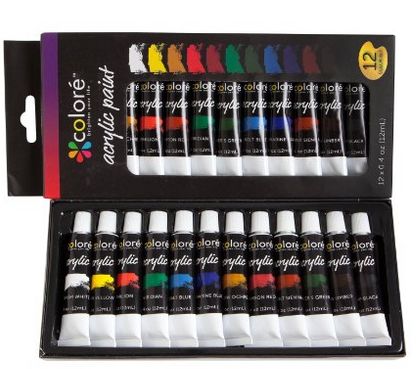Remember if you were in grade school and painting seemed so simple because your teacher just handed you art supplies and helped wash brushes afterwards? Approaching the medium as being a more mature artist, you must understand paintbrush materials and how to properly maintain your brushes.

First, you have to decide whether you will be needing soft or stiff hairs to your paintbrush. Either can be generated of natural hairs or synthetic fibers. A skinny paintbrush is ideal when you want to do detailed work or precise painting. It enables you to spread paint easily. Hard bristles conversely are better for manipulating thick paint. This lets you create brush marks within the paint that may be seen for the canvas. Vincent van Gogh’s effort is renowned for this technique, as evidenced by his painting The Starry Night.
Most purists will claim that natural hair will almost always be finer quality than synthetic fiber for the flexibility and strength. Your hair for paintbrushes arises from animals including Sable, squirrel, hog, camel, ox, pony and goat. In the event the regarded using hair derived from one of of those animals making you squeamish or you have ideological issues with this, usually do not fear: modern acrylic paint set have come a long way and they are much less expensive than their natural hair counterparts.
The next thing is to understand slightly about paintbrush anatomy. The handle is normally manufactured from wood and it is referred to as the ferrule. This props up hairs or bristles. The top in the bristles is known as the toe.
When deciding which paintbrush for doing things is important to find out how big is the comb. This is driven by considering several along the side of the handle. The tiniest dimensions are 00 as well as 0, 1, 2 etc. If you are buying online you will need to view a picture of the brush you’re purchasing. Two brushes sized exactly the same can actually be unique because of the amount of bristles along with the width from the handle. This concern could be alleviated if you shop in an actual store or already are informed about the brand of brush.
It takes time and effort and funds to get the right paintbrush, so that it is smart to deal with them, including proper cleaning after each use.
Before beginning, be sure you have mild soap (or turpentine if appropriate) plus some tissue. You will also need lukewarm water as well as a location to dry your brushes.
Wipe over excess paint utilizing a soft cloth or tissue. Then, rinse your brushes in turpentine if you utilize oils, but use lukewarm water if you’re paint is water-based. Domestic hot water may cause the hairs of one’s brush to fallout. Afterwards, gently wash your brushes with mild soap. Rinse and repeat as frequently as necessary until no color arrives plus your brush returns for the original color. Next rinse your paintbrush in water that is clean. Be sure you remove the surplus water after this. If the brushes seem misshapen, use your fingers to gently bring the brush return towards the original shape.
You are ready to dry the paintbrushes. Wrap the bristles in tissue or make-up when they are wet. If the bristles dry they’ll contract like this and can maintain their shape. Let the brushes dry at room temperature. Do not rest them on their head since this is another potential hazard to maintaining appropriate shape.
For additional information about canvas see this site: read here
